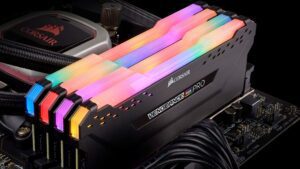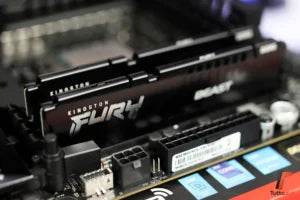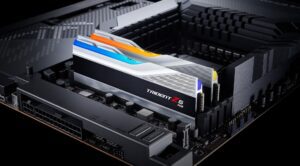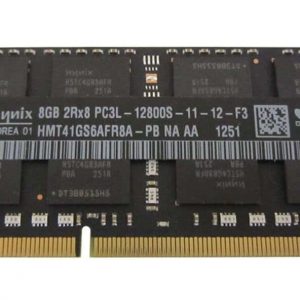DDR5 RAM characteristics and comparison with previous versions
Their advent was long awaited, and now they are finally a reality; we are obviously talking about DDR5 RAM , their interesting functions and a comparison with  previous versions.
previous versions.
This new memory version was announced starting in 2017, but was only "put into practice" at the end of 2020, and then only became reality with Intel processors in the last period.
As far as AMD is concerned, these are the crucial months, with processor compatibility expected within this year.
But let's get to know DDR5 RAM and its peculiarities better.
Let's start from the basics, RAM memories
The term RAM refers to Random Access Memory . This term indicates random access memory.
A hardware component present since the dawn of the computer, its function is to, thanks to its speed, provide ready data support for the CPU. Being very fast, having the data in RAM does not in fact slow down the processor's data loading process, a slowdown that would instead occur in the case of loading from the hard disk, a less expensive but also much less rapid memory component.
RAM is therefore not to be considered as a storage component, but only for processing and switching.
Like processors and any other IT component, RAM has also undergone and is enjoying a process of continuous updating and improvement.
 DDR5 RAM
DDR5 RAM
As with any other new standard, it all began with an "officialization" by JEDEC.
JEDEC (Joint Electron Device Engineering Council), is a body made up of the largest players in the semiconductor industry.
This body released the standards for DDR5 memory in 2018.
But what exactly are DDR5 RAMs?
New generation standards as regards RAM, they replace DDR4 as an elite choice.
Presented on the industrial market in 2019, they started appearing on the first INTEL machines after a few months.
To date, DDR5 has shown that it can offer better performance and lower consumption than DDR4, but the best for this type of memory is yet to come.
In fact, currently the best sets with DDR5 RAM are still unable to achieve the best performance of an equivalent configuration with DDR4.
A youthful sin, which still requires optimization, but which will soon be resolved, for a new RAM that will quickly become "the standard of excellence".
The improvements expected from DDR5 RAM
Thicker. The new DDRs will be able to allocate much more space on the same memory bank than the previous version. With the same amount of space occupied, DDR5 memory will have four times the capacity, accommodating an incredible 64 GB on a single card. In addition to this, at the same time, we will see a decrease in consumption (from 1.2 to 1.1 Volts) and an increase in speed (from 3200 MHz to 4800/6400 MHz).
The DDR5 Ram also doubles the internal prefetch, i.e. the ability to anticipate the next instruction requested by the processor.
Another evolution will be from the protection point of view, with a new system (RAS) that protects data security, not only during writing, but also during reading.

DDR3, DDR4 and DDR5, the differences
There are many parameters that differentiate these three different memory versions.
Let's find out:
 Which DDR is best?
Which DDR is best?
Classic question which however requires an answer of the "it depends" type. In fact, there is no DDR RAM that is better than the others regardless.
In fact, if we can consider DDR3 RAM as "outdated" for a new PC, the same does not apply to DDR4 which from a price/performance point of view is currently still the best.
Of course, DDR5, by far, has better technical data, but to date, as it is not yet perfectly supported, it risks being just a choice more "in name" and "image" than technical.
As for existing PCs, from the point of view of RAM alone it is not worth upgrading the machine. In fact, any transition to DDR5 RAM will have to be a consequence of the adoption of a more powerful motherboard and CPU.
DDR5 RAM, where?
DDR5 RAM has been installed and will be mounted as first use on "mobile" devices and laptops. In fact, there are still few desktop computers that will benefit from this RAM in the first period.
In all these "battery-powered" installations, what will be installed will not be the classic DDR5 RAM memory, but its low energy consumption version.
Also known as Low Power and identified by the acronym LPDDR5 , these RAMs have countless advantages that make them the perfect choice for high-end mobile devices.
Following this, DDR5 will then cover the performance computer market, thus being installed on high-performance machines, such as those dedicated to computer gaming.











